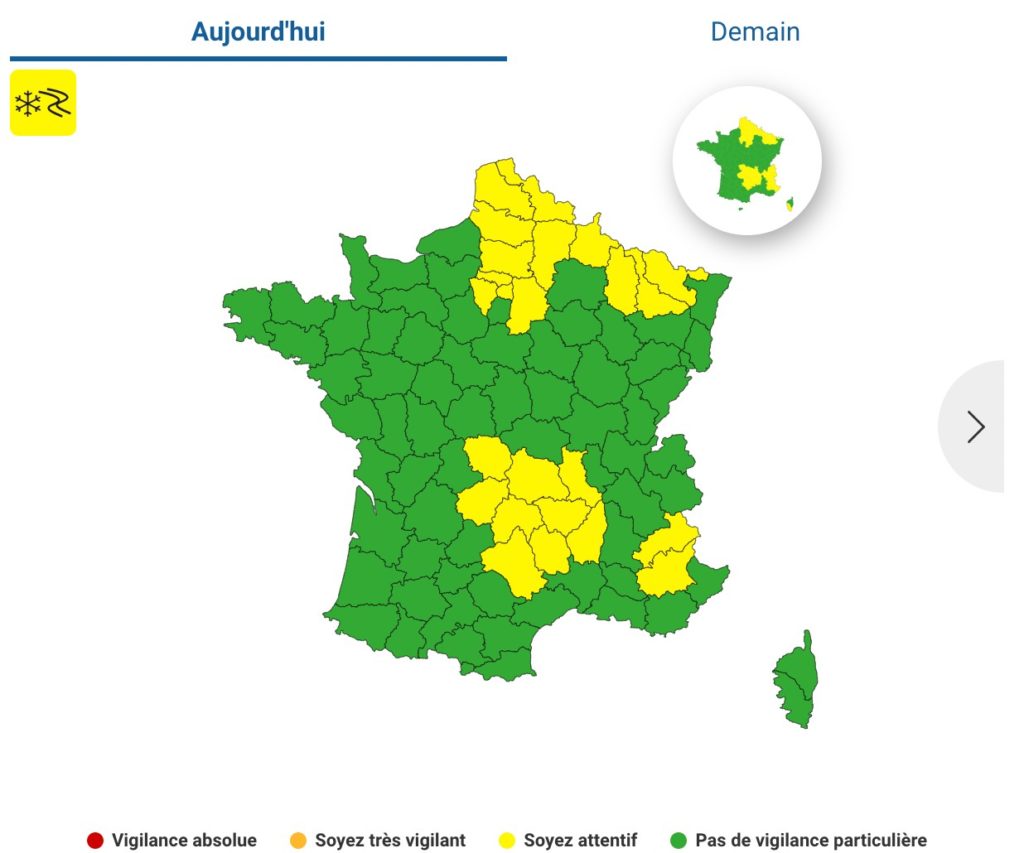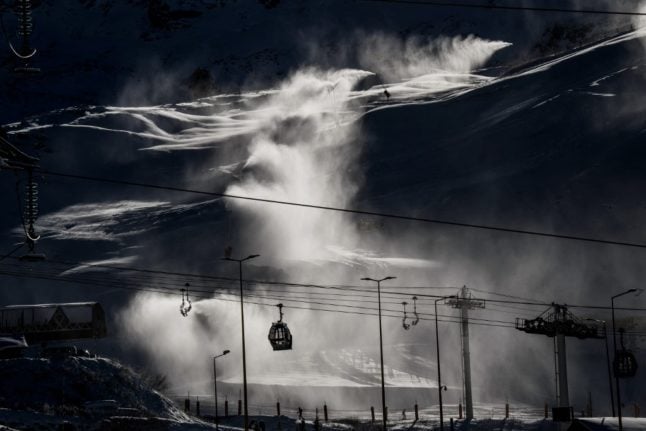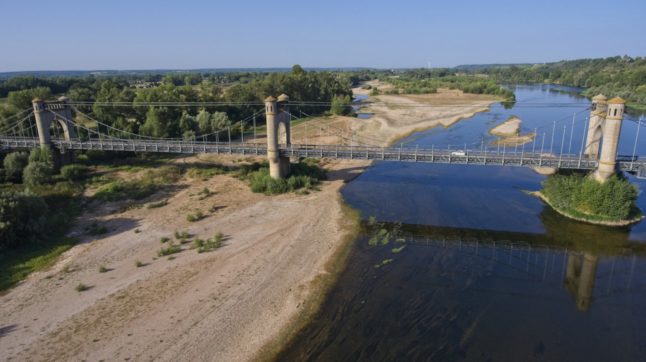Winter weather has made its way to France. On Monday, Météo-France placed 24 departments under the “yellow” warning on Monday, over snow and ice.
The départements concerned were primarily located in France’s north, north-east, and centre.

Snowflakes made their appearance in Hauts de France and the Paris region on Monday morning, with a few centimetres accumulated in the Grand-Est region.
In Lozere, significant snowfall on Monday left several motorists blocked in traffic on the A75.
Les images d'automobilistes bloqués sur l'A75 en Lozère à cause de fortes chutes de neige pic.twitter.com/GZv9M8nXQn
— BFMTV (@BFMTV) December 5, 2022
Ski season opened at several resorts, such as the high-altitude Val Thorens resort, in the French Alps this weekend.
As of Monday morning, six of France’s mountainous departments, from Haute-Savoie to Alpes-Maritimes were placed on the “yellow” (be aware) alert for avalanches on Monday.
Neige bien présente sur Gap la capitale des Hautes Alpes depuis le début de soirée. LPN 300m plus bas que prévu.
Ça va glisser demain ! pic.twitter.com/jrAzreFuav
— Paul Marquis (Expert Meteo) (@La_Meteo_du_13) December 4, 2022
Where snow is expected later this week
According to BFMTV, the remainder of the week will be marked by dry, cold weather across much of the northern parts of France, but the snowflakes are likely to return over the weekend, from Friday through Sunday.
Météo France expects temperatures to be colder than average this week, by about 4 to 5C chillier than seasonal norms.
Snowfall may begin on Friday morning, starting in France’s east and centre, particularly in the Oise and Cher départements. Later in the evening, light snowflakes are expected to fall on the départements north of the Seine and as far east as Alsace, particularly impacting Ille-et-Vilaine, Mayenne, Orne, Sarthe, Maine-et-Loire and Indre-et-Loire could also be affected.
Over the weekend, about two thirds of the northern part of the country will get to see some flurries, and by Sunday morning, a large northeast quarter of France could have a dusting of snow over the ground before higher temperatures turn the snow to rain later in the day.



 Please whitelist us to continue reading.
Please whitelist us to continue reading.
Member comments